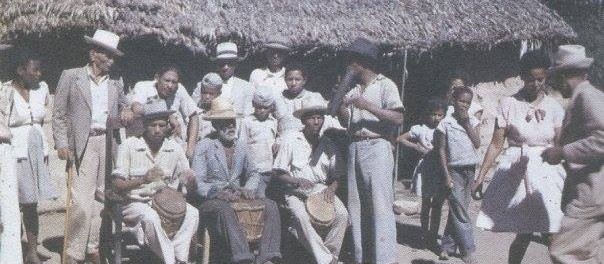Moreno, Negro, Indio: ExplainedPosted in Articles, Caribbean/Latin America, History, Media Archive, United States on 2017-07-30 00:57Z by Steven |
Moreno, Negro, Indio: Explained
La Galería Magazine: Voices of the Dominican Diaspora
2015-05-29
Gerald Lopez
 Una fiesta de Sarandunga en Bani Circa 1960s en La Vereda, de Bani. Photo taken from book Instrumentos Dominicanos by Fradique LIzardo. |
Growing up in NYC and being in circles of proud Afro-descendant brothers and sisters, I noticed that Dominicans were seen as prime examples of self-hate, race deniers and would often go as far as calling themselves Indio (Native Americans). There is some truth to these claims and while others are simply misunderstandings, it is far more complicated than it seems. What do Dominicans of predominant African ancestry identify as? I’ve dug through history books, looked at geography, and at common language for this answer. It turns out that since very early on there were two words used to describe enslaved Africans in the Dominican Republic:
Negr@ (Black): This word was strongly associated with being enslaved and was part of the slave master’s denigrating lingo in which he reduced our humanity to a color, black. In doing this they disassociated us from our culture and history. There is no ethnic group in Africa that is called Negro. In Dominican society and history, the term Negro was associated with being property (a slave), while Moreno was associated with being a Free African. Often you will find both in Dominican history books, church baptisms, and slave transactions, the word Negro used for a slave. For example, this is from the ‘Archivos Reales de Bayaguana’ which can be found here.
Read the entire article here.